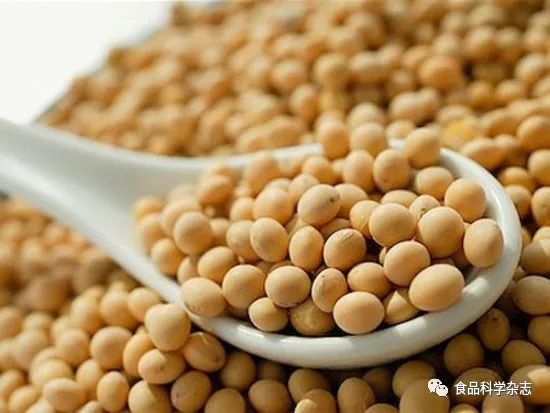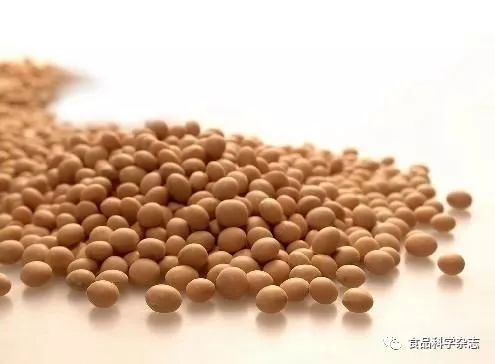As one of the few plant-based proteins that can be compared to animal proteins, Soy Protein Isolate (SPI) holds an important position in the food industry. However, its application is somewhat limited due to poor functional properties such as solubility, emulsification, and foaming. Therefore, modifying it has significant practical value. Glycosylation can effectively improve the functional properties of SPI, and the Maillard reaction is an important pathway to achieve protein glycosylation.


Wang Luhui, Xiao Junxia from the College of Food Science and Engineering, Qingdao Agricultural University, and Xu Tongcheng from the Agricultural Products Research Institute of Shandong Academy of Agricultural Sciences plan to conduct the Maillard reaction of SPI with Glucose (Glu) and Maltose (Mal) under humid heat conditions to study the effects of various conditions on the degree of Maillard reaction and characterize some properties of the resulting products. The aim is to provide some theoretical references for the practical application of the Maillard reaction in SPI modification.


With the increase in temperature, the SPI-Glu-MRPs‘s A290 nm and A420 nm show an increasing trend, and A290 nm and A420 nm both reach their maximum at 100 ℃, indicating that the Glu has undergone a Maillard reaction with SPI. As the temperature rises, the SPI-Mal-MRPs‘s A290 nm and A420 nm also generally show an increasing trend, reaching their maximum at 100 ℃ for A290 nm, but A420 nm peaks at 90 ℃ and significantly decreases at 100 ℃ (P<0.05), which may be due to excessive Maillard reaction resulting in the formation of a large number of insoluble high molecular weight reaction products.
The SPI-Glu-MRPs‘s A290 nm shows a trend of first increasing and then decreasing with the extension of reaction time, reaching its maximum at 6 h; correspondingly, the SPI-Glu-MRPs‘s A420 nm slowly increases with the extension of reaction time, and after 6 h the difference is not significant (P>0.05), indicating that the Maillard reaction gradually enters the advanced stage, and at 6 h the degree of Maillard reaction is relatively complete. The effect of reaction time on the Maillard reaction between SPI and Mal is basically consistent with that of Glu, that is, with the extension of reaction time, A290 nm first increases and then decreases, while A420 nm slowly increases.
With the proportion of SPI kept constant, as the proportion of Glu decreases, the SPI-Glu-MRPs‘s A290 nm significantly decreases (P<0.05), and A420 nm also shows a similar trend. However, the effect of the mixing mass ratio on the Maillard reaction between SPI and Mal is much smaller. With the decrease of Mal content in the reaction system, although A290 nm also decreases, the extent of decrease is much smaller than that of SPI-Glu-MRPs, which may also be due to the different molecular structures of Glu and Mal.



When the reaction time is 2 h and 6 h, the solubility of both SPI-Mal-MRPs and SPI-Glu-MRPs increases with the extension of reaction time, and the former’s solubility is higher than that of the latter, but both are higher than that of the heated SPI-H under the same conditions; when the reaction time is further extended to 10 h, the solubility of both Maillard reaction products significantly decreases (P<0.05), and the solubility of SPI-Glu-MRPs is even lower than that of SPI-H, indicating that when the reaction time is too long, insoluble macromolecular polymers form, and the Maillard reaction enters an advanced stage, with Glu being more prone to forming such products with SPI.
Under the same conditions, SPI-H has the highest emulsifying activity, while adding reducing sugars reduces the emulsifying activity of SPI-H, which may be due to the destabilizing effect of the added reducing sugars on the emulsion structure formed by SPI and soybean oil. After heating for 6 h under humid heat conditions, the emulsifying activities of SPI-H and the two Maillard reaction products decrease, with SPI-Glu-MRPs being slightly higher than SPI-Mal-MRPs, but still lower than that of SPI-H, which is contrary to the changes in emulsifying activity of Maillard reaction products obtained under dry heat conditions.
The Maillard reaction with Glu and Mal for 6 h reduces the pH value of the SPI solution from 8.9 to 7.2 and 7.6. Studies have shown that the amino acids participating in the Maillard reaction in SPI are mainly lysine and arginine, which are more likely to participate in the Maillard reaction under humid heat conditions; simultaneously, the Maillard reaction generates acidic substances, leading to the decrease in the pH value of the SPI solution.
At a reaction time of 6 h, the pH value of the Maillard reaction product solution decreases, and this pH value is consistent with the relationship of ζ-potential as measured by researchers; however, when the reaction time is further extended to 10 h, the ζ-potential of the SPI-Glu-MRPs and SPI-Mal-MRPs solutions starts to increase again, exceeding that of SPI-H, which is consistent with the results obtained by researchers in the Maillard reaction products of SPI hydrolysates with Glu and Mal.
The rate of change is clearly divided into 3 stages: the first stage is from 60 to 200 ℃, the second stage is from 200 to 300 ℃, and the third stage is from 300 to 500 ℃. Within the range of 60 to 200 ℃, the heat loss of SPI-Glu-MRPs and SPI-Mal-MRPs is smaller compared to that of SPI-N and SPI-H. The heat loss in this temperature range is usually due to moisture evaporation, and reduced moisture evaporation indicates that the Maillard reaction may lead to the formation of macromolecular products, enhancing their water-holding capacity.
The absorption peak at 3,441 cm−1 corresponds to the stretching vibration peak of —NH2+, which appears in both SPI-Glu-MRPs and SPI-Mal-MRPs, indicating that this group has not completely participated in the Maillard reaction; however, in SPI-Glu-MRPs, compared to SPI-H, the peak broadens, indicating that the Maillard reaction has had some impact on this group; the peak at 1,650 cm−1 corresponds to the stretching vibration of the acetylamide group CH3—O=C—NH——CO, and compared to SPI-H, the peaks of the two reaction products also broaden, indicating that SPI has undergone a Maillard reaction with the two sugars.

Both Maillard reaction products exhibit characteristic absorption at wavelengths of 400 to 425 nm, and the absorption is stronger than that of the corresponding monomers and simple mixtures, which is consistent with results observed in Maillard reaction products formed from casein and whey protein with Mal or lactose, indicating that SPI has undergone a Maillard reaction with reducing sugars.
SPI-H has fewer bands than SPI-N, specifically, the bands corresponding to protein molecular weights of 43 kDa in the 11S component and 22 kDa in the 7S component disappear, which is inferred to be due to denaturation and aggregation caused by heating; compared to SPI-Mal-Mix (band 2) and SPI-Glu-Mix (band 4), the Maillard reaction between SPI and Mal (band 1) and Glu (band 3) shows obvious bands at high molecular weights, while the 11S component has two bands with lighter color, and the band of 66.2 kDa disappears compared to SPI-H, confirming that the Maillard reaction has led to the formation of macromolecules between SPI and Mal and Glu.
Conclusion
By optimizing the Maillard reaction conditions for Glu, Mal, and SPI, it was found that the higher the reaction temperature and the longer the time, the higher the degree of Maillard reaction. Considering energy consumption issues, the research conditions for characterizing the Maillard reaction are determined to be a mixing mass ratio of SPI and Glu/Mal of 4∶1, a reaction temperature of 80 ℃, and a reaction time of 6 h.
The Maillard reaction significantly improved the solubility of SPI, and Mal has a better modification effect on SPI than Glu; the Maillard reaction reduced the emulsifying properties of SPI, which is contrary to most reported conclusions under dry heat conditions, indicating that the Maillard reaction process between SPI and sugars under dry and humid heat conditions may differ; the Maillard reaction has a certain effect on the ζ-potential of SPI, as the degree of Maillard reaction increases, the negative charge of SPI significantly decreases; the Maillard reaction causes the pH value of the SPI solution to decrease; thermal stability analysis shows that the Maillard reaction reduces the thermal stability of SPI; Fourier transform infrared spectroscopy analysis shows that the Maillard reaction introduces new chemical bonds in SPI; fluorescence analysis shows that the Maillard reaction enhances the fluorescence intensity of SPI; SDS-PAGE indicates that the Maillard reaction leads to the formation of macromolecules.
This article “Maillard Reaction of Soy Protein Isolate with Glucose and Maltose Under Humid Heat Conditions” is from “Food Science” 2018, Vol. 39, Issue 16, pages 19-26, authors: Wang Luhui, Xiao Junxia, Xu Tongcheng, Wang Peng, Huang Guoqing. DOI:10.7506/spkx1002-6630-201816004. Click below to read the original article for more information.
Edited by: Yuan Yi; Editor-in-Chief: Zhang Ruimei
Image source: Baidu Images


To further promote the development of special dietary foods and special medical purpose formula foods, drive technological innovation in the industry, better ensure human health and improve quality of life, Hebei Food Inspection Research Institute, Beijing Food Science Institute, and China Food Magazine’s “Food Science” magazine jointly held the “Forum on the Development and Quality Safety of Special Dietary Foods and Special Medical Purpose Formula Foods” on November 17-18, 2018 in Shijiazhuang, Hebei. The conference will deeply discuss the research results, clinical and nutritional applications, functional components and academic evaluations, food safety and toxicology, microbiology, immunology, and other major theoretical research in food science and nutritional health, exchange and learn from foreign experiences, and share relevant policies and management norms.
We sincerely invite you to attend this forum, to gather networks, share resources, and seek common development!

Long press or scan the QR code to register
